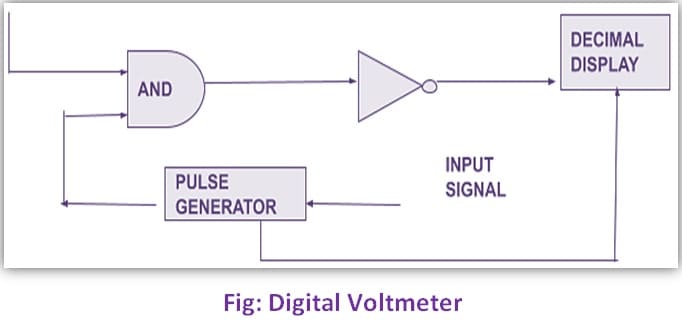Digital Voltmeter:
A digital voltmeter is is an electrical measuring tool that is used to determine the potential difference between two points. It doesn’t matter if the voltage to be measured is AC or DC. Digital Voltmeter mostly used nowadays for the measurement of electrical properties in both AC and DC circuits.
Working Principle of Digital Voltmeter:

1. Input Signal: The signal or voltage to be monitored is known as the input signal.
2. Pulse Generator: A pulse generator is a voltage source that generates a rectangular impulse using analog, digital, or both methods. The frequency and width of the rectangular pulse are controlled by the controller’s digital circuitry.
3. AND: It produces a high output when both inputs are high. When a train pulse and a rectangle pulse are fed to it, the AND gate produces a train pulse output. They have the same duration as the pulse generator’s rectangular pulses.
4. Decimal Display: The decimal display keeps track of the number of impulses and their duration. The voltage value is then displayed on a display screen, which can be LCD or LED, after it has been calibrated.
Advantages of Digital Voltmeter:
1. Greater speed
2. Higher accuracy and resolution
3. No parallax error
4. Reduced human error
5. Compatibility with other digital equipment for further processing and recording.
Disadvantages of Digital Voltmeter:
1. While measuring under 1mV for AC and under 100μV for DC, the noise and drift will cause the last digit or last but one digit to fluctuate a lot. Hence it is more difficult to estimate average reading under these conditions.
2. Adjustment of the reading to a certain value, even to a minimum or maximum, isn’t convenient with a digital instrument.